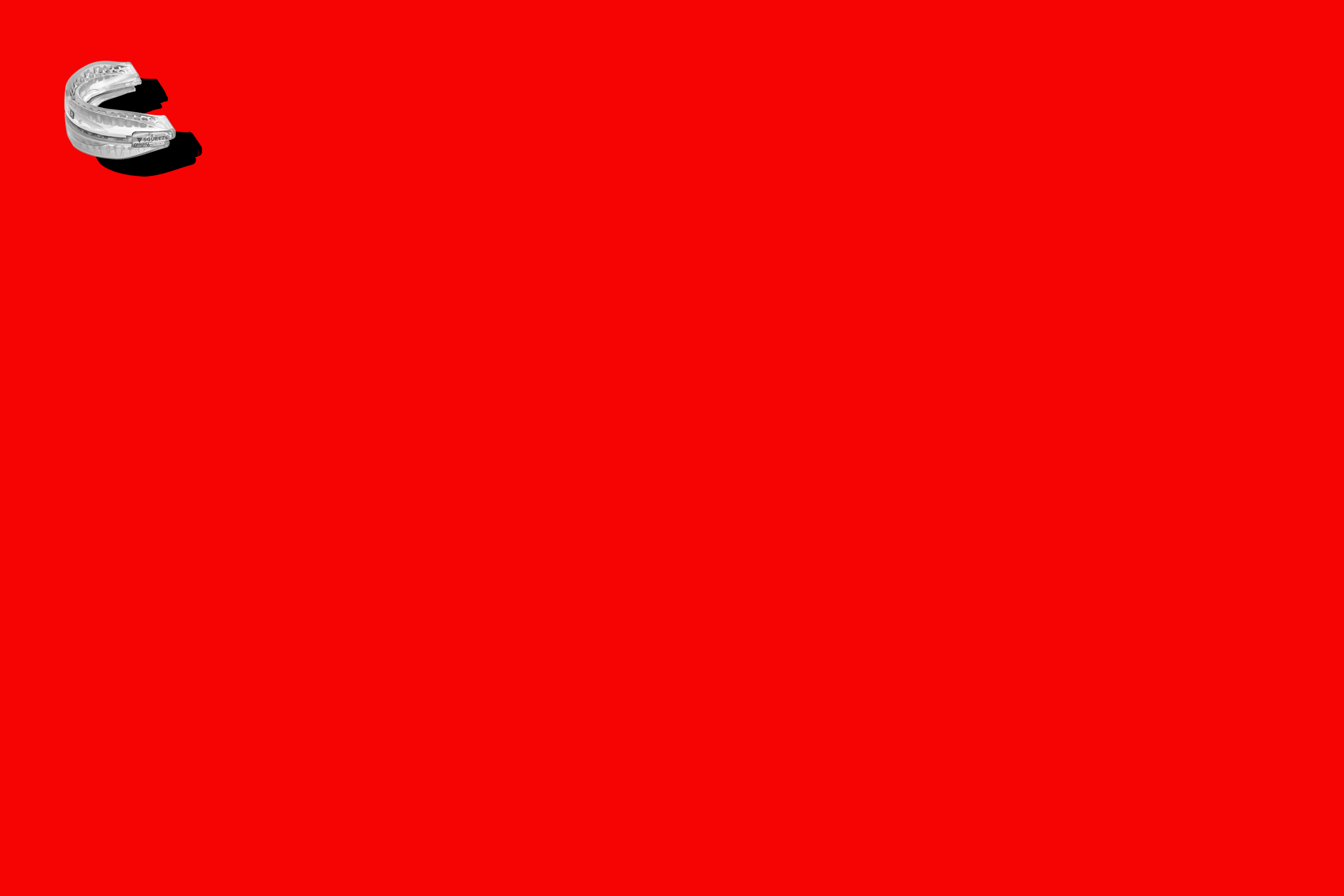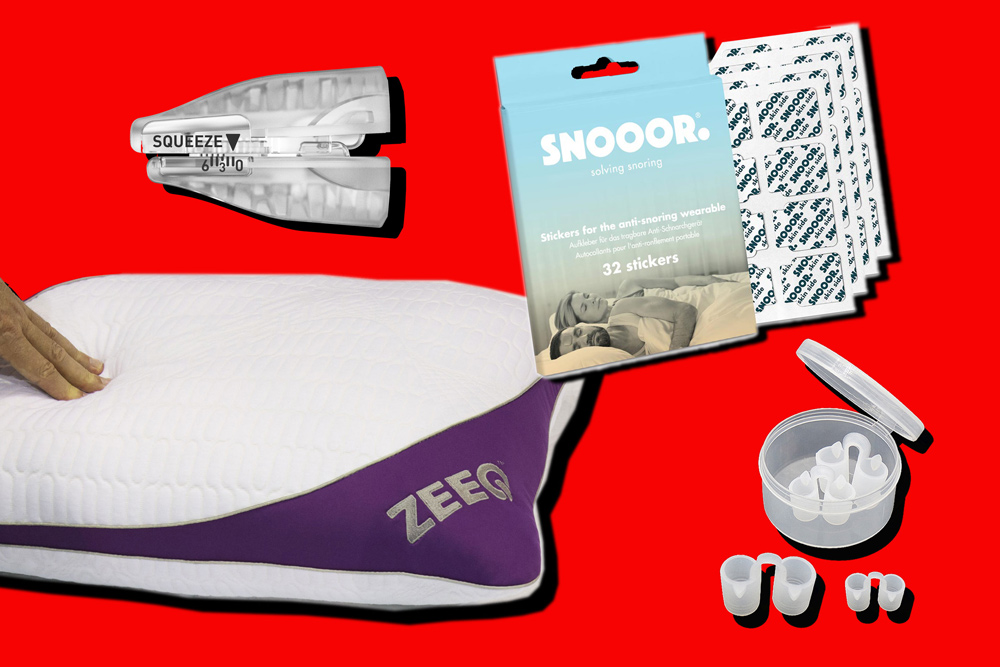打鼾能否治愈?科学家认为很难

按照詹姆斯•法伦的说法,有一款产品将改善美国人的关系和亲密度。这是一款防打鼾牙套,他认为即使你自己不买,你的另一半也会替你买一套。
法伦是加利福尼亚州Apnea Sciences公司的创始人。该公司发明的塑料牙套SnoreRx,类似于曲棍球比赛里可能用到的牙套。它的工作原理是让下颌前移,避免舌头向后阻塞气道。这意味着你可能整晚口水流个不停,但如果你运气好的话(因为它并不适合所有人),它能让你停止打鼾,帮你赢回在床上的位置。
SnoreRx只是越来越多防打鼾产品之一。打鼾是一种极为普遍但很少有人关注的情况。晚上的呼噜声会影响正常睡眠,而且让你的爱人备受折磨,而且无论重症医疗护理还是更注重美丽的健康行业往往都忽视了这个问题。打鼾并不是小众问题:据哈佛医学院(Harvard Medical School)估计,在30至60岁的人群中,44%的男性和28%的女性都会打鼾。
打鼾如此普遍,以至于我们忘了它根本不应该发生。
斯坦福睡眠中心(Stanford Sleep Center)的医生和睡眠专家拉斐尔•佩莱约说:“[对于动物来说]睡眠本身是一件危险的事情。你得避免发出任何噪音,防止捕食者发现你的位置。”
打鼾本身并不是一种疾病,而是呼吸受阻的一种症状,所以导致打鼾的原因也有低风险(感冒或者喝了太多啤酒)和高风险(阻塞性睡眠呼吸暂停)之分。
这意味着如果不先去看医生,用任何手段消除鼾声都不是好主意。佩莱约把这种做法比作“切断火警警报,然后说没有发生火灾。”

但在确定原因之后,你可以有无数种选择:从牙套到扩张鼻孔和吸住舌头的产品;从跟踪打鼾情况的应用程序到高科技鼻贴和能把你“轻推到”侧身位的枕头;再到需要处方的持续气道正压通气(CPAP)设备。CPAP设备使用呼吸面罩,帮助输送稳定的气流,打开气道。
位于卡尔加里的MPowrx医疗健康产品公司(MPowrx Health and Wellness Products)的总裁南希•马克雷表示,解决打鼾问题“没有什么灵丹妙药”。该公司生产的产品名为Good Morning Snore Solution,可以向前拉舌头以避免阻塞气道。“要了解哪一种产品对哪些人有效,你得进行大量尝试。”
阿姆斯特丹的牙科医生米歇尔•艾利瑟表示,飞速增长的防打鼾产品中包括可以跟踪个人健康状况的应用程序和其他技术。艾利瑟是Side Sleep Technologies公司的CEO。该公司利用一款振动贴纸产品Snooor,可以提醒打鼾者侧身睡,这个体位经常能缓解打鼾的情况。
他指出,当前肥胖人群日益增多,科技和其他非处方类产品让人们不必去看医生也能“开始了解自身的问题”。肥胖与打鼾有密切的关系,肥胖人群增多意味着打鼾者的数量也会随之增加。
据PitchBook统计,从2015年至2019年,来自生物科技和消费者领域与打鼾有关的公司吸引了2.84亿美元风险投资。防打鼾技术只是日益增长的睡眠和睡眠科技行业的一部分。该行业在同期内吸引的风险投资超过12亿美元。
现在,人们能否呼吸通畅这个问题,变得更加重要。
打鼾作为更广泛的睡眠或呼吸道问题的一个症状,与新冠肺炎的易感染性是否有关联?现在对这个问题下结论仍为时尚早,但CPAP设备和医用呼吸机之间的相似性,已经引起了人们的关注。
罗德岛大学和加州大学伯克利分校发起的项目,呼吁人们捐赠CPAP设备,这些设备经过改造之后将作为医用呼吸机使用。另外,荷兰皇家飞利浦电子公司(Royal Philips)等主要CAPA设备制造商很快承诺将增加产量。皇家飞利浦公司已经在生产医用呼吸机。
不过佩莱约表示,这并不意味着在家里可以把CPAP设备作为应对新冠肺炎的应急治疗装置。因为这种设备不同于封闭的呼吸机设备,它会从系统中泵入和泵出空气,因此将未改造的CAPA设备作为呼吸机使用,可能会进一步传播病毒。
但他指出,无论你是否打鼾,越来越多的证据表明你应该认真对待自己的睡眠能力。
他说:“只有身体进入睡眠状态之后,我们的免疫系统才能恢复活力。”(财富中文网)
翻译:刘进龙
审校:汪皓
按照詹姆斯•法伦的说法,有一款产品将改善美国人的关系和亲密度。这是一款防打鼾牙套,他认为即使你自己不买,你的另一半也会替你买一套。
法伦是加利福尼亚州Apnea Sciences公司的创始人。该公司发明的塑料牙套SnoreRx,类似于曲棍球比赛里可能用到的牙套。它的工作原理是让下颌前移,避免舌头向后阻塞气道。这意味着你可能整晚口水流个不停,但如果你运气好的话(因为它并不适合所有人),它能让你停止打鼾,帮你赢回在床上的位置。
SnoreRx只是越来越多防打鼾产品之一。打鼾是一种极为普遍但很少有人关注的情况。晚上的呼噜声会影响正常睡眠,而且让你的爱人备受折磨,而且无论重症医疗护理还是更注重美丽的健康行业往往都忽视了这个问题。打鼾并不是小众问题:据哈佛医学院(Harvard Medical School)估计,在30至60岁的人群中,44%的男性和28%的女性都会打鼾。
打鼾如此普遍,以至于我们忘了它根本不应该发生。
斯坦福睡眠中心(Stanford Sleep Center)的医生和睡眠专家拉斐尔•佩莱约说:“[对于动物来说]睡眠本身是一件危险的事情。你得避免发出任何噪音,防止捕食者发现你的位置。”
打鼾本身并不是一种疾病,而是呼吸受阻的一种症状,所以导致打鼾的原因也有低风险(感冒或者喝了太多啤酒)和高风险(阻塞性睡眠呼吸暂停)之分。
这意味着如果不先去看医生,用任何手段消除鼾声都不是好主意。佩莱约把这种做法比作“切断火警警报,然后说没有发生火灾。”
但在确定原因之后,你可以有无数种选择:从牙套到扩张鼻孔和吸住舌头的产品;从跟踪打鼾情况的应用程序到高科技鼻贴和能把你“轻推到”侧身位的枕头;再到需要处方的持续气道正压通气(CPAP)设备。CPAP设备使用呼吸面罩,帮助输送稳定的气流,打开气道。
位于卡尔加里的MPowrx医疗健康产品公司(MPowrx Health and Wellness Products)的总裁南希•马克雷表示,解决打鼾问题“没有什么灵丹妙药”。该公司生产的产品名为Good Morning Snore Solution,可以向前拉舌头以避免阻塞气道。“要了解哪一种产品对哪些人有效,你得进行大量尝试。”
阿姆斯特丹的牙科医生米歇尔•艾利瑟表示,飞速增长的防打鼾产品中包括可以跟踪个人健康状况的应用程序和其他技术。艾利瑟是Side Sleep Technologies公司的CEO。该公司利用一款振动贴纸产品Snooor,可以提醒打鼾者侧身睡,这个体位经常能缓解打鼾的情况。
他指出,当前肥胖人群日益增多,科技和其他非处方类产品让人们不必去看医生也能“开始了解自身的问题”。肥胖与打鼾有密切的关系,肥胖人群增多意味着打鼾者的数量也会随之增加。
据PitchBook统计,从2015年至2019年,来自生物科技和消费者领域与打鼾有关的公司吸引了2.84亿美元风险投资。防打鼾技术只是日益增长的睡眠和睡眠科技行业的一部分。该行业在同期内吸引的风险投资超过12亿美元。
现在,人们能否呼吸通畅这个问题,变得更加重要。
打鼾作为更广泛的睡眠或呼吸道问题的一个症状,与新冠肺炎的易感染性是否有关联?现在对这个问题下结论仍为时尚早,但CPAP设备和医用呼吸机之间的相似性,已经引起了人们的关注。
罗德岛大学和加州大学伯克利分校发起的项目,呼吁人们捐赠CPAP设备,这些设备经过改造之后将作为医用呼吸机使用。另外,荷兰皇家飞利浦电子公司(Royal Philips)等主要CAPA设备制造商很快承诺将增加产量。皇家飞利浦公司已经在生产医用呼吸机。
不过佩莱约表示,这并不意味着在家里可以把CPAP设备作为应对新冠肺炎的应急治疗装置。因为这种设备不同于封闭的呼吸机设备,它会从系统中泵入和泵出空气,因此将未改造的CAPA设备作为呼吸机使用,可能会进一步传播病毒。
但他指出,无论你是否打鼾,越来越多的证据表明你应该认真对待自己的睡眠能力。
他说:“只有身体进入睡眠状态之后,我们的免疫系统才能恢复活力。”(财富中文网)
翻译:刘进龙
审校:汪皓
To hear James Fallon tell it, there’s one product that is improving relationships—and, ahem, intimacy—across America. It’s a snore guard, and if you don’t buy one, he thinks your significant other just might.
Fallon is the founder of Apnea Sciences, the California-based creator of the SnoreRx, a plastic mouthguard that bears a resemblance to the kind you might use for a hockey game. It works by pulling your jaw forward, keeping your tongue from falling backward and blocking your airway. It will mean you’ll probably drool all night, but if you’re lucky—it doesn’t work for everyone—it will stop your snoring, winning back your spot in the bed.
The SnoreRx is just one of a rising number of products designed to stifle snoring, the widespread but little-addressed nighttime rumbling that stymies proper sleep and torments romantic partners—and often falls between the cracks of critical medical care and the more aesthetics-conscious wellness industry. It’s not a niche issue: About 44% of men and 28% of women between 30 and 60 snore, according to Harvard Medical School.
Snoring is now so common, in fact, we forget it shouldn't be happening at all.
“Sleeping is inherently dangerous [to animals],” says Dr. Rafael Pelayo, a physician and sleep expert at the Stanford Sleep Center. “You shouldn’t be tipping off a predator by making noise.”
Because snoring is a symptom of obstructed breathing, rather than a condition itself, the causes range from low risk (a cold, a few too many beers), to high risk (obstructive sleep apnea).
That means silencing your snoring without medical consultation isn’t generally a good idea—Pelayo compares it to “disconnecting a fire alarm, and saying there’s no fire.”
But once you’ve established the cause, the options are nearly endless: from mouth guards to products to widen your nostrils and suction your tongue; to apps that track your snoring and high-tech stickers and pillows that “nudge” you to roll onto your side; to prescribed CPAP machines, which use face masks to help deliver a steady jet of air, keeping your airways open.
“There’s no silver bullet” for fixing snoring, says Nancy Markley, the president of Calgary-based MPowrx Health and Wellness Products, which makes a product called the Good Morning Snore Solution, which pulls the tongue forward so it doesn’t block the airway. “You have to have a big toolbox to see what product will work for what person.”
Apps and other technology that helped people track their own health have been part of the explosion in anti-snoring products, says Michiel Allessie, an Amsterdam-based dentist who specializes in sleep problems. He is the CEO of Side Sleep Technologies, which uses a vibrating sticker product called Snooor to remind snorers to switch onto their side, which frequently eases snoring.
Technology and other over-the-counter options allowed people to “start actually looking at their own problems” outside the doctor’s office, he pointed out—at a time when increasing obesity, which has been linked to the tendency to snore, means that the number of snorers is rising.
Snoring-related companies attracted $284 million worth of venture capital funding across the biotech and consumer field from 2015 to 2019, according to PitchBook. Snore tech is also just one part of the growing sleeping and sleep tech sector, which attracted more than $1.2 billion in VC funding over that same period.
Now, the question of how well someone can breathe has taken on added significance.
Though it’s too early to say whether snoring, as a symptom of larger sleeping or respiratory problems, is linked to vulnerability to COVID-19, the similarities between CPAP machines and medical-grade ventilators have already gained attention.
Projects launched by both the University of Rhode Island and Berkeley have solicited donations of the machines to tweak to be used as ventilators. Meanwhile, major CPAP manufacturers like Netherlands-based Royal Philips, which already made medical ventilators, quickly pledged to increase their output.
That doesn’t mean you should attempt to jury-rig your CPAP machine at home, says Pelayo. Because the machines pump air both in and out of the system—unlike a ventilator, which is a closed system—using an unadapted CPAP machine as a ventilator would likely spread the virus further, he notes.
But for snorers and non-snorers alike, there are increased arguments for taking your ability to sleep seriously, he says.
“If we let our bodies sleep,” he says, “our immune system bounces back.”













